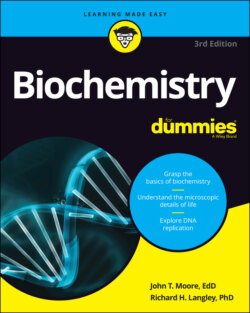Читать книгу Biochemistry For Dummies - John Moore T., Richard Langley H., John T. Moore - Страница 59
Determining the chiral form: Enantiomer or stereoisomer?
ОглавлениеAll substances have a mirror image (okay, except vampires); however, if a chiral carbon atom is present, the mirror images are nonsuperimposable. Hold out your left and right hands, palms up — they are nonsuperimposable mirror images. These two mirror images are called enantiomers. The different chiral forms differ from each other in two aspects:
How they affect light
How they interact with other chiral substances (usually only one chiral form is biologically active)
To determine how a particular form affects light, it’s necessary to use plane-polarized light, in which all the light waves vibrate in the same plane. When you use this kind of light, a chiral substance rotates the vibrational plane of the light — one form (the dextrorotatory, d, isomer) rotates the plane to the right, and the other (the levorotatory, l, isomer) rotates the plane to the left. The d and l forms are stereoisomers and are optically active.
